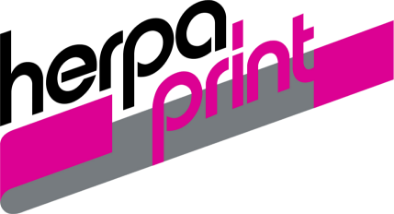Andreas Binder
Head of Sales
News
Consequences of selecting the wrong label

The perfect fit label for a specific identification task requires the use of materials that are optimally suited to the application, correctly printed and have a suitable adhesive on the surface of the object.
Andreas Binder, Head of Sales at herpa print, explains the consequences of selecting the wrong labels.
Mr. Binder, why is it so important to choose the right label?
The correctly selected label acts as an essential basis for efficient operational processes. The label stores and transmits the information necessary for precise identification. Furthermore, there are binding regulations on labelling, which can only be fulfilled by choosing an adequate label. For example, required documentation of testing and maintenance activities can only be provided by legislation if safety-relevant components can be clearly identified. In the case of repairs, recalls, spare parts deliveries or warranties, the correct label also plays a crucial role. Another significant field of application is associated with the labelling of hazardous substances. This is especially true for the chemical industry. Especially in this industry, the labels must be made of particularly resistant and highly adhesive materials.
What happens if the wrong label is being selected?
An incorrectly chosen label often does not stand up to environmental conditions. It becomes unreadable, no longer adheres to the component or even disintegrates completely. In this case, all of the requirements envisaged can no longer be met and additional costs may be incurred. In digitized and automated processes, the lack of clear identification of objects leads to costly disruptions to production or logistics processes. Missing labels have to be reprinted and applied manually. This increases the need for materials. The labels that have fallen off can also glue the sensors or mechanics of the system. In addition, the use of cost-effective label material with surface irregularities leads to premature wear of the print heads due to the abrasive effect. This aspect is often neglected, as is the fact that contamination, for example from dust or cuttings from low-quality label production, can spread in the printers or dispenser facilities. We have helped many companies resolve process issues that were clearly due to the use of incorrectly selected or low-quality materials.
Why aren't labels chosen more carefully?
Labels belong to the so-called C-parts, which are not integral parts of a product and have a low unit price. Because of these characteristics, they are often considered strategically less important and calculated with limited budgets. As a result, only the most cost-effective labels are usually procured – with significant negative effects on processes and equipment. Procurement focused solely on the low price neglects the potential impact on the efficiency of operational processes as well as on the service life and performance of the equipment. Therefore, strategic sourcing is critical to smooth operations and long-term success, even for seemingly insignificant C-parts.
What needs to be considered when choosing a label?
The appropriate label material, adhesive and printing process for the application are crucial. External or application-related influences that could affect the label must be taken into account. There is a possibility that additional solvent- and chemical-resistant protective laminates or conformal coatings may be required. It is also important to take into account how easily a label detaches from the backing material. If there is no coordination here, there is a risk that the manufacturing process will be affected by the printing and dispensing process of the label, which should be avoided.
About herpa print
herpa print is IATF 16949 certified and stands for high-quality labeling solutions and RFID applications, outdoor advertising as well as vehicle and machine decors. The company's products and solutions are used in the automotive, electronics, industrial manufacturing, pharmaceutical and chemical industries. Sustainable production is achieved through continuous optimisation of production processes
Your contact at herpa print:


